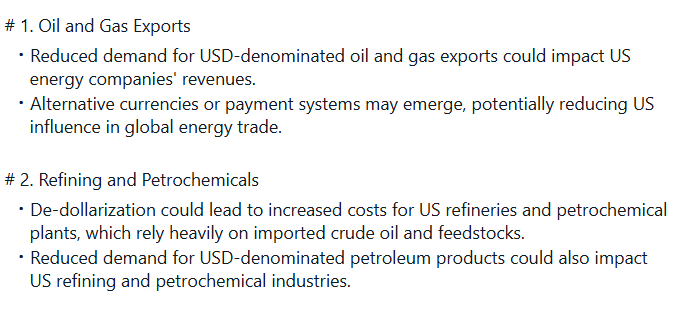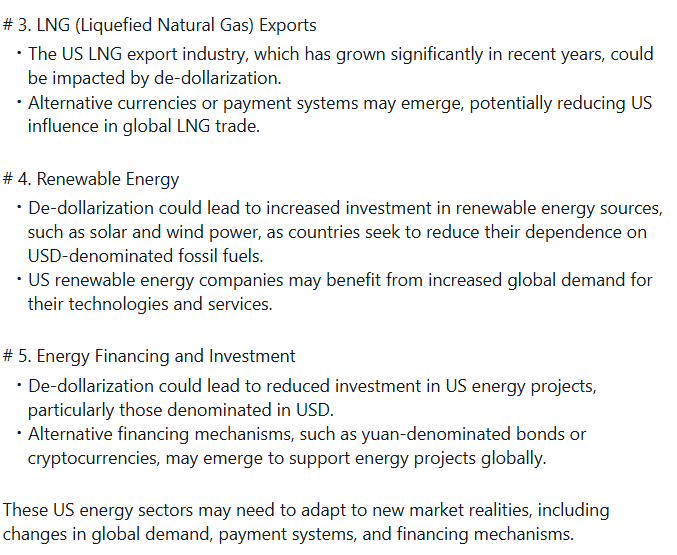Donald Trump is back in the White House and is now adamant on introducing a new import tariff regime to bolster the US economy. While Trump’s intent is entirely focused on strengthening the US manufacturing units with a special emphasis on boosting the productivity of the nation, his aggressive tariff policies are impacting world economics, brewing a trade war in the process. Will this development furthermore boost the rising de-dollarization drives impacting major US industries and units? Let’s find out.
Also Read: Litecoin (LTC) Transactions Surge 200%, Is a Major Rally to $200 Next?
Is US Bolstering De-Dollarization?
Donald Trump is leaving no stone unturned to revamp the US economy and lost fortunes. In this quest, Trump is levying heavy tariffs on multiple nations, including the BRICS bloc, which are known exclusively for initiating de-dollarization.
“On trade, I have decided, for purposes of fairness, that I will charge a RECIPROCAL tariff, meaning whatever countries charge the United States of America, we will charge them—no more, no less.”
On Trade, I have decided, for purposes of Fairness, that I will charge a RECIPROCAL Tariff meaning, whatever Countries charge the United States of America, we will charge them – No more, no less!
— Donald J. Trump (@realDonaldTrump) February 17, 2025
For purposes of this United States Policy, we will consider Countries that use the…
Trump had earlier stated in one of his tweets how he may levy heavy tariffs on nations that have been moving away from the US dollar. His stance remains largely unchanged as he continues efforts to revive the US economy by alleviating its mounting debt pressure.
“The idea that the BRICS countries are trying to move away from the dollar while we stand by and watch is OVER. We require a commitment from these countries that they will neither create a new BRICS currency nor back any other currency to replace the mighty U.S. dollar, or they will face 100% tariffs and should expect to say goodbye to selling into the wonderful U.S. economy. They can go find another “sucker!” There is no chance that the BRICS will replace the U.S. dollar in international trade, and any country that tries should wave goodbye to America.”
The idea that the BRICS Countries are trying to move away from the Dollar while we stand by and watch is OVER. We require a commitment from these Countries that they will neither create a new BRICS Currency, nor back any other Currency to replace the mighty U.S. Dollar or, they…
— Donald J. Trump (@realDonaldTrump) November 30, 2024
Also Read: Donald Trump’s Bold Plan for US Crypto Regulation—Could Bitcoin Reserve Be the Future?
5 US Energy Sectors That May Take The Fall
Several experts have been noted criticizing Trump’s tariff regime, adding how it may severely impact or backfire in the long run.
“Similarly, what begins as a trade war can evolve into something bigger. It’s a truth worth remembering as the United States imposes substantially higher tariffs on our trading partners, who have the ability to respond in unanticipated ways,” as stated by Peter Orszag.
He later stated how the development could evolve into something big, which may manifest as a massive selloff of US treasury bonds.
“This makes Treasury markets a ripe target if negotiations result in prolonged conflict,” he added. “Selling Treasuries would mean taking capital losses, but foreign governments might accept those losses to pressure the United States.”
At the same time, such harsh tariffs may also compel other countries to ditch the US dollar and find other able alternatives, ushering de-dollarization in the process.
If de-dollarization advances more aggressively, these five energy sectors may start to decline at a rapid pace.
- Oil and Gas Exports
- Refining and Petrochemicals
- Liquefied Natural Gas Exports
- Renewable Energy
- Energy Financing and Investments


Also Read: VeChain: Analyst Predicts VET Could Rally 23%, Hit $0.039
Reduced demand for USD-denominated oil and gas exports could impact the US economy structure. Furthermore, de-dollarization may bring in increased costs for refining and petrochemical plants, bringing more pressure to the unit.
The LNG export industry may also take a massive hit if de-dollarization advances, as it is an export-based industry. The process may also result in decreased demand for US energy products, affecting its economy in the process.


Also Read: Will GTA 6 Accept Crypto Payments?





